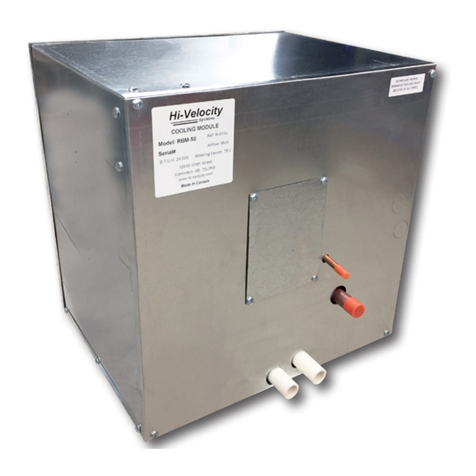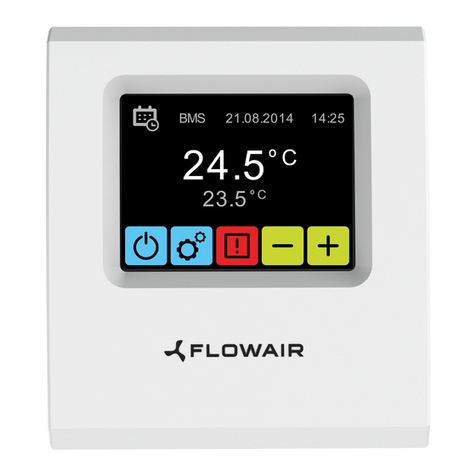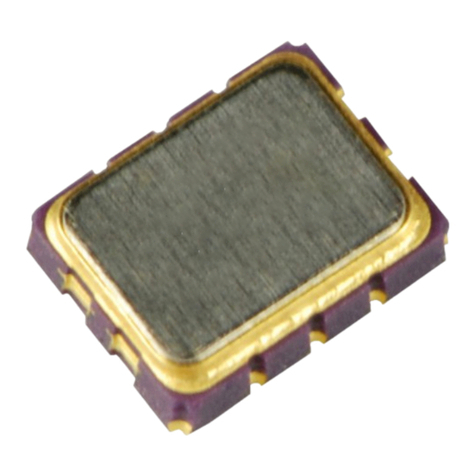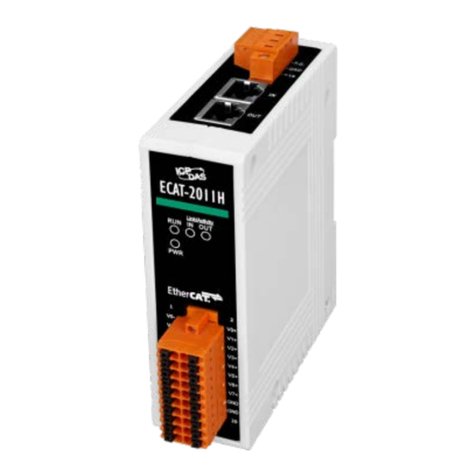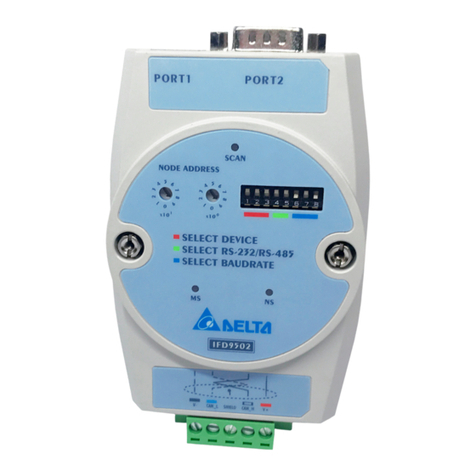Hi-Velocity RPM-E User manual

Manufactured By
Module-RPM-E-Refrigerant-Module-Installation-052020Module-RPM-E-Refrigerant-Module-Installation-052020
RPM-E Refrigerant Module
Installation Manual
Small Duct High Velocity Heating, Cooling and Home Comfort Systems

www.hi-velocity.com
© 1995-2020 Energy Saving Products Ltd.© 1995-2020 Energy Saving Products Ltd.
*IMPORTANT: The freeze control serves the purpose
of preventing severe icing of the coil in the event of
an undercharge or low load on the coil. This piece of
equipment must be used at all times. Lack of use of
the freeze-stat will result in RPM-E related warranty
issues being voided.
A
A1
B
B1
COIL
Module RPM-E
Refrigerant Module Installation
Rough Opening Sizes A or B A1 or B1
RPM-E 50 113/4”L X 131/4”H
(298mm X 337mm)
113/4”L X 9”W
(298mm X 229mm)
RPM-E-70 163/4”L X 131/4”H
(425mm X 337mm)
163/4”L X 9”W
(425mm X 229mm)
RPM-E-100 223/4”L X 131/4”H
(578mm X 337mm)
223/4”L X 9”W
(578mm X 229mm)
Refrigerant Modules (RPM-E)
The RPM-E series cooling module can be used with the Hi-
Velocity Fancoil, installed in many dierent positions. It is pre-
piped with an adjustable, heat pump ready, thermal expansion
valve and comes with a bleed port, sight glass, suction and liquid
line access ports, freeze-stat, and two L brackets for mounting.
The RPM-E comes as a complete module and must be installed
in the vertical position on the return air side of the fancoil; the
unit cannot be turned on its side and is a draw through unit
only. The module oers multi-position airow congurations for
horizontal, highboy, or counter-ow congurations. (Fig. RPM-
01)
The TXV (Thermal Expansion Valve), sight glass, access ports,
and freeze-stat* are already installed and are accessible through
an easy to remove access hatch. The liquid and suction lines have
male solder connections at a standard width making connections
to the condenser lines quick and easy.
Fig. RPM-01 - RPM-E Cooling Module Congurations
When installing, follow the recommendations shown in
Table 01, demonstrated in Fig. 01. For example, a horizontal
application could use A to B while highboy applications could
use A to B1. Do not use a combination of A to A1 or B to B1, as
this would bypass the cooling coil completely. A1 is not to be
used for outlet airow. The knock-outs can be removed with a
screw driver and hammer. Use caution when opening the knock-
outs, ensuring you do not damage the coil surface.
Congurations
Important: If side A1 is going to be used in your selected
conguration, the extended drain pan must be removed.
RPM-E Drain Pan Extension
The RPM-E Drain Pan Extension (DPE) is to be removed for up
ow (vertical) return air applications (avoid installing the RPM-E
in counter ow applications).
The lower knockout can now be removed, using a screwdriver
and hammer (Fig-RPM-03). Use caution when removing knockouts
ensuring you do not damage the coil inside the module.
To remove the pre-installed DPE, rst remove left side access
panel of the RPM-E Module. Remove the 3 - ¼ ” screws that hold
the DPE in place, remove the DPE and replace ¼” screws into the
coil support (Fig. RPM-02). Replace the left side access panel.
-2--2-
Right Wrong
A to B B1 to A1
A to B1 B to A1
A1 to B A to A1
A1 to B1 B to B1
B to A
B1 to A
Table RPM-01 - RPM-E Cooling Module Congurations
Fig-RPM-02 - Remove DPE
Fig-RPM-03 - Remove Knockout
*IMPORTANT: The freeze control serves the purpose
of preventing severe icing of the coil in the event of
an undercharge or low load on the coil. This piece of
equipment must be used at all times. Lack of use of
the freeze-stat will result in RPM-E related warranty
issues being voided.
A
A1
B
B1
COIL

www.hi-velocity.com
© 1995-2020 Energy Saving Products Ltd.© 1995-2020 Energy Saving Products Ltd.
Locate the outdoor unit in a suitable location, as close as
possible to the fan coil. Maintain the clearances recommended by
the manufacturers of the outdoor unit, to ensure proper airow.
The outdoor unit must be installed level, in a properly supported
location. A liquid line lter/drier is recommended to be installed.
Outdoor Unit Installation
Make all connections to the outdoor unit with rain tight conduit
and ttings. Most building codes require a rain tight disconnect
switch at the outdoor unit as well (always check local codes). Run
the proper size copper wires to the unit, and connect as per the
manufacturer’s recommendations.
Ensure that the outdoor unit is setup for a TX system. If not, a
hard start kit may be required.
Wiring - Outdoor Unit
-3--3-
Mounting the RPM-E
Fig. RPM-04 - Mounting Brackets
(76mm)
(76mm)
(76mm)
(76mm)
Two L mounting brackets are shipped loose for attaching the
RPM-E to the fan coil, along with two sided foam tape for an air
seal between the units. When mounting the cooling coil to the
fancoil (Fig. RPM-04), ensure that no screws puncture the drain
pan or coil. It is advised that no screws be placed within 3 inches
(76mm) from the bottom of the coil. This will prevent the drain
pan from being accidentally pierced. It is also advised that care be
taken when placing screws in the top left side of the cooling coil
(when looking at the access hatch), as this is where the top most
extent of the cooling coil is located. See Specication Pages for
the dimensions of the fan coil units and cooling modules.
Fig. RPM-05 - Secondary drain pan
Capped
Cleanout
P-Trap
Secondary
Drain
Primary
Drain
Drain Connections, P - Trap &
Secondary Drain Pan
The primary condensate drain must have a minimum 3”
P-Trap installed (Fig. 05). The drain line must run at a slope of
¼” per foot in the direction of the drain. RPM-E modules come
with a ¾” male CPVC primary and secondary outlet. It is good
practice to install a clean out right above the P-Trap. Using a
“tee tting” and cap in the P-Trap’s construction can be used as
the clean out and as a way to prime the P-Trap if it ever dries out.
A wet P-Trap is important. A dry P-Trap can be detrimental to
proper drainage. If code requires a secondary drain line, run the
secondary line using the same method as primary. Otherwise,
capping o the secondary drain line is acceptable. Do not run the
secondary drain line to the secondary drain pan or use it as a vent
to atmosphere! An equipment stand/riser or rubber equipment
mat may be necessary to elevate the module o of the ground to
allow for a P-Trap.
Any installation that has the potential of property damage
due to condensate must have a secondary drain pan installed. If
the unit is installed in a high heat and/or high humidity location,
extra insulation around the unit casing may be required. This will
prevent excessive condensate from forming on the outer surface
of the casing.
Important: Piping the condensate lines on a return side cooling
coil can be dramatically dierent, be sure to read info below.
Module RPM-E
Refrigerant Module Installation

www.hi-velocity.com
© 1995-2020 Energy Saving Products Ltd.© 1995-2020 Energy Saving Products Ltd.
Pipe Sizing
When sizing refrigerant piping,
follow the outdoor unit
manufacturer’s recommendations.
Run the pipes in the most direct route possible, taking into
account structural integrity and building details. If the evaporator
is located above the condenser, slope any horizontal runs toward
the condenser. If the condenser is located above the evaporator,
a P-trap must be installed at the bottom of the vertical riser. For
long vertical risers, additional P-traps must be installed for every
twenty feet (6m). For lines running over 50’ (15m), a suction line
accumulator must be installed. Lines running over 100’ (30m) are
not recommended. All lines should be piped so as not to restrict
access to the front panels, lter section, or electrical enclosure.
Piping the RPM-E
Only refrigerant grade pipe and ttings are to be used with
Hi-Velocity Systems. Plumbing ttings may contain wax or other
contaminants which are detrimental to the proper operation of
the system. Insulate the suction line with 3/8” (9.53mm) insulation
such as Armaex. In high heat areas, 1/2” (12.7mm) insulation
may be needed. If the lines are run in an area where temperatures
could exceed 120°F (49°C) or runs longer than 50’ (15.24m), then
the liquid line may need to be insulated as well. Support the pipe
every 5 feet (1.52m), or whatever local code states.
Brazing & Pressure Testing
The RPM-E comes pre-piped with the coil assembly. With the
RPM-E, the Liquid and Suction lines are the only brazing that need
to be done at the fan coil. For charging and brazing, remove the
front access panel of the RPM-E (Fig. RPM-06). With the access
panel removed, the coil assembly will be accessible. Wet rag the
liquid and suction line (or use a heat dissipating paste) to ensure
no overheating occurs to the pre-piped coil assembly. Excess heat
may damage the RPM-E components.
Fig. RPM-06 - Remove Front Access Panel
Once the system has been brazed it must be pressure tested.
Pressure testing must be done with nitrogen and not refrigerant.
Typically, pressures are tested to the maximum operating pressure
that the system will see. Allow the system to hold the nitrogen
charge for at least 15 minutes to ensure there are no leaks. Check
with local codes for proper testing procedures.
After the piping is installed and all components have been
brazed together, a vacuum pump must be used to evacuate the
system from both the low and high side to 1500 microns (200
pa). Add pressure to the system to bring the pressure above zero
psig. After allowing the refrigerant to absorb moisture, repeat the
above procedure. Evacuate the system to 500 microns (67 pa) on
the second evacuation, and ensure that the system holds at the
vacuum pressure. If not, check for leaks and evacuate again. At
this point open service valves on pre-charged condensing units,
and add refrigerant to the system if necessary.
Evacuating
The use of an electronic leak detector is recommended, as it is
more sensitive to small leaks under the low pressures.
Once the system has been determined clean and ready for
charging, refrigerant can be added. The service valves on the
condenser must be open at this point. Never leave the system
unattended when charging. With the system running, slowly
add refrigerant. The typical operating point of an RPM-E coil is
that of a saturated suction temperature of 38-40°F (3-4°C) and a
suction line temperature of 42-44°F (6-7°C). In order to prevent
overcharging during this stage, refrigerant should be added in
steps. This will allow time for the system to settle and prevent
‘overshooting’ the ideal charge. Condenser pressures and
temperatures remain similar to those in a conventional forced air
system. It is recommended that the coil be charged on a high load
day at the compressor’s highest speed.
Charging
-4--4-
Most system start ups require only an adjustment to the
refrigerant level of the system. Should further renement be
required, the TXV may be adjusted. A clockwise turn of the
superheat valve (the direction in which the cap is screwed on) will
result in a closing of the valve while a counterclockwise turn (the
direction in which the cap was unscrewed) will result in opening
of the valve. Always note system conditions before adjusting the
valve and allow 5 minutes for the system to settle before making
any further adjustments. Never adjust the TXV more than one
quarter turn at a time.
Module RPM-E
Refrigerant Module Installation

www.hi-velocity.com
© 1995-2020 Energy Saving Products Ltd.© 1995-2020 Energy Saving Products Ltd.
Freeze Stat
The RPM-E series cooling coil comes equipped with an anti-
freeze control mounted on the suction line. This freeze control
serves the purpose of preventing severe icing of the coil in the
event of an undercharge or low load on the coil. This piece of
equipment must be used at all times. Lack of use of the
freeze-stat will result in RPM-E related warranty issues
being voided. During start-up, it is acceptable to jumper across
the Freeze-Stat. This will prevent the freeze-stat from shutting
the system o while charging a new system that may be low
on refrigerant. Once charged and running, this jumper must be
removed and the Freeze-Stat connected to the FZ and FZ terminals
on the Printed Circuit Board. Should wiring needs arise in which
the outdoor unit is controlled through another means of wiring,
the Freeze-Stat should be connected in series on the supply side
of the control wiring.
Heat Pumps
Traditionally, SDHV systems have been charged to special
guidelines when used in conjunction with heat pumps. This
charging procedure involved charging the units to normal cooling
capacities and reviewing the operation in heating mode. If head
pressures were found to be impinging on the high head pressure
limits, a small amount of refrigerant was removed to prevent the
unit from shutting down. The cause of high head pressures in
heating mode is due to the disparity in sizes of the indoor and
outdoor coils, along with the lower airow rates of SDHV systems.
The RPM-E coil can operate at a level that is dierent from
most other conventional system coils. Typically, superheat levels
are low, 2-4°F of superheat. Adjustment of the valve also diers
somewhat. Rather than having a large eect on the range of
superheat, adjustment of the valve has a larger eect on the
system pressures; superheat maintaining a fairly constant point.
Opening the valve will increase suction pressures and decrease
liquid pressures, while closing the valve will decrease suction
pressures and raise liquid pressures.
Bi-Flow Receiver
The Bi-Flow Receiver is designed
for use with heat pump systems,
up to 5 tons, and with any typical
refrigerants. The receiver allows
refrigerant a location to migrate to
during the heating cycle, minimizing
head pressures. During cooling mode,
the receiver is empty, allowing the full
refrigerant charge to be utilized for
cooling.
The receiver is a horizontal tank with a pair of dip tubes
extending to the bottom of the tank. These two tubes allow for
liquid refrigerant to be drawn from the tank regardless of the
direction of ow. For this reason, the receiver must be mounted
so that the inlet/outlets of the tank come out of the top of the
unit. Mounting brackets are located at the base of the unit for
secure mounting. The receiver is to be located on the liquid line of
the system, anywhere between the indoor and outdoor coils. As
the unit is of a bi-ow design, it does not matter which end faces
towards the indoor coil.
The inlet/outlet ports are constructed of steel and require the
use of a 35-45% Silver Solder and Flux for brazing. The use of
standard copper to copper solders may result in diculty brazing
and the potential for a failure at the weld. Ensure that the tank is
protected from overheating while brazing and that any remaining
ux is cleaned from the unit. If installing outdoors, ensure that the
receiver is insulated and protected from the elements.
With the introduction of newer, larger heat pumps, this issue
is more likely to be experienced. While some heat pump units
may still be charged in the traditional method, the amount of
refrigerant that is required to be removed for heating mode may
leave the system drastically undercharged for cooling mode. For
this reason it is highly recommended that a Bi-Flow Receiver be
used with heat pump applications.
Charging Cont’d
-5--5-
Typical Operating Ranges
Saturated Suction Temperature 38 - 40°F (3 - 4°C)
Suction Line Temperature 42 - 44°F (6 - 7°C)
Superheat 2 - 4°F (1 - 2°C)
Suction Line Pressure R-22 60 - 72 psig
R-410a 110-124 psig
Liquid Line Pressure R-22 160-210 psig
R-410a 250-300 psig
Module RPM-E
Refrigerant Module Installation

www.hi-velocity.com
© 1995-2020 Energy Saving Products Ltd.© 1995-2020 Energy Saving Products Ltd.
-6--6-
Troubleshooting the TXV
When issues arise that bring the function of the TXV into
question, factors must be looked into before replacement.
Inspect the TXV for signs of damage. This may be from a pinched
equalizer line to a burnt valve. These issues will have an adverse
aect on the operation of the valve. Should the equalizer line be
pinched, the valve will no longer be able to supply the proper
amount of refrigerant to the coil. A burnt valve may have an eect
on the refrigerant charge of the TXV bulb or the seal of the valve.
This may again cause an improper amount of refrigerant to be
metered by the valve or cause the valve head to become seized.
The TXV bulb location and mounting should also be inspected.
The bulb should be securely mounted on the top half of the
suction line. If the bulb is loose or on the lower half of the line, the
bulb will not properly sense the refrigerant temperature and will
not meter the proper amount of refrigerant. Ensure that the bulb
is also properly insulated, as a lack of insulation will expose the
bulb to conditions well outside those of the coil. This will cause an
overfeed of refrigerant to the system.
Should the installation of the valve be proper, and no damage
is evident, inspect the operation of the valve. If the TXV bulb
is removed and held in ones hand, the valve should react
accordingly. This sudden increase in heat will open the valve. This
will cause a rise in suction pressure and a drop in liquid pressure.
Should nothing happen, the valve is likely seized and will need to
be replaced.
and outdoor unit, on and o. This often takes the form of very
short and frequent on cycles. There are many factors that may
contribute to short cycling of the refrigerant system. These issues
can generally be broken down between airow related issues,
refrigerant issues, and installation issues.
Low airow rates are one of the most common causes of short
cycling. As the airow rate is lowered across the cooling coil, the
coil pressure drops along with it. This lowers the temperature of
the coil and may cause the freeze-stat to trip. As the system settles,
the freeze-stat closes and the cycle begins again, as the unit
does not run long enough for the space to become adequately
conditioned. Ensure that the proper amount of airow is provided
to the coil. Check for proper air ows and return air practices.
Improperly charged systems run the risk of short cycling as well.
An undercharged system will react much the same as a system
with low airow. If the charge is low enough, it may trip out on
low pressure. If a system is overcharged, it may trip out on high
head pressure. Ensure that the system charge is within the bounds
described in section “Piping the RPM-E”.
System set-up and installation should be checked as well.
Piping practices should be within the bounds described in section
“Piping the RPM-E” and within the realms of the outdoor unit
manufacturer. Extreme and often unnecessary adjustment of
the TXV can create conditions similar to an undercharged coil. A
poorly placed T-stat, such as underneath a vent, can cause short
cycling. This happens due to the T-stat being satised very shortly
after the unit has begun to operate.
Short Cycling
Short cycling is the unnecessary running of the indoor
Specications RPM-E-50 RPM-E-70 RPM-E-100
Matching Fan Coil
HE-Z/HE-B/HE-50/51
HV-50/51/52
LV-50
HE-Z/HE-B/HE/HV-70/71
LV-70 HE-Z/HE-B/HE/HV-100/101
Part Number 20090200050 20090200070 20090200100
Tons(1) 1.5 - 2.0 (5.3 - 7.0 kW) 2.5 - 3.0 (8.8 - 10.6 kW) 3.5 - 5.0 (12.3 - 17.6 kW)
Refrigerant Type R-410A R-410A R-410A
TX Cooling MBH(2) 18-24 (5.3-7.0 kW) 30-36 (8.8-10.6 kW) 42-60 (12.3-17.6 kW)
Latent Cooling MBH 6.8-8.9 (2.0-2.6 kW) 11.7-13.7 (3.4-4.0 kW) 16.0-22.2 (4.7-6.5 kW)
Fin Material Aluminum Aluminum Aluminum
Tubing Material Copper Copper Copper
Type of Fins .006 Al (0.1524mm) .006 Al (0.1524mm) .006 Al (0.1524mm)
Hydronic
Connection
Sizes
Liquid Line (Lq) 3/8”(9.5mm) 3/8”(9.5mm) 3/8”(9.5mm)
Suction Line (S) 7/8” (22.3mm) 7/8” (22.3mm) 7/8” (22.3mm)
Drain Connection 3/4”M CPVC (19mm) 3/4”M CPVC (19mm) 3/4”M CPVC (19mm)
TXV with Built in Check Valve & Bypass Yes Yes Yes
Site Glass Yes Yes Yes
Access Ports Yes Yes Yes
Freeze Stat Yes Yes Yes
Shipping Weight 48 lbs (22kg) 59 lbs (27kg) 74 lbs (34kg)
Module Size (L x W x H) 19 1⁄4”x 14 5⁄8”x 18 1⁄2”
(489mm x 371mm x 470mm)
24 1⁄4” x 14 5⁄8” x 18 1⁄2”
(616mm x 371mm x 470mm)
32” x 14 5⁄8” x 18 1⁄2”
(813mm x 371mm x 470mm)
MBH - Thousand British Thermal Units per Hour
TX - Thermal Expansion
TXV - Thermal Expansion Valve
(2) Smaller condensers may be matched to the fan coil when needed (match TXV to condenser size)
(1) Minimum ofMinimum of four HE outletsfour HE outlets per ton of cooling needed. (2" Duct = Minimum per ton of cooling needed. (2" Duct = Minimum eight outletseight outlets per ton)per ton)
Module RPM-E
Refrigerant Module Installation

www.hi-velocity.com
© 1995-2020 Energy Saving Products Ltd.© 1995-2020 Energy Saving Products Ltd.
Module RPM-E
Refrigerant Module Installation
-7--7-
• Inoperative parts must be returned to Energy Saving Products Ltd. with an ESP RMA Form that
includes model, serial number, and a detailed description of the entire problem. Inoperative parts
must be returned in testable condition.
• This warranty does not cover shipping costs to and from the factory, labor costs or any other cost
associated with the installation of the replacement part.
• Energy Saving Products Ltd. is not liable for any other damages, personal injury, or any other losses
of any nature.
• The liability of Energy Saving Products Ltd. is limited to and shall not exceed the cost of pre-approved
replacement parts.
WARRANTY
AThree (3) Year Limited Warranty is extended on Electric Strip Heaters.
A Five (5) Year Limited Warranty is extended on all components in products manufactured exclusively
by Energy Saving Products. These components include Motors, WEG Controller, Circuit Boards, Dampers,
Zoning Controls, Blowers, Motor & Blower Assemblies, Heating Coils, Chilled Water Coils, and Air
Conditioning Coils. Note: If any product is installed in or exposed to a corrosive environment, warranty
will be void.
Energy Saving Products Ltd. is proud to oer a limited warranty. This warranty applies strictly to the rst
purchaser at wholesale level and only to the fan coil unit and module. It does not include connections, attachments
and other products or materials furnished by the installer.
TERMS & CONDITIONS
• Any repair performed under warranty must be approved by Energy Saving Products Ltd. for this
warranty to be valid.
This warranty replaces all other warranties expressed or implied.
www.hi-velocity.com
• Should there be multiple consecutive failures of a single part, warranty will not be considered unless
a contractor has contacted Energy Saving Products Ltd. Technical Department for assistance, and
received a tech code.
Follow these steps for Service or Repair:
1. Contact the installer of the product or a licensed service company
2. Contact the distributor
3. Contact Energy Saving Products Ltd. Mon-Fri 8 am – 4:30 pm MT 1-888-652-2219
This warranty excludes any damages caused by changes, relocation to, or installation in a new site. This warranty
does not cover any defects caused by failure to follow the installation and operating instructions furnished with
the fan coil. This warranty does not cover defects caused by failing to adhere to local building codes and following
good industry standards. Failure to correctly install the fan coil, or material related to the unit, may result in
improper system performance and/or damages and will void this warranty. This warranty does not cover material
installed in or exposed to a corrosive environment. This warranty does not cover products subjected to abnormal
use, misuse, improper maintenance, or alteration of the product. Using the fan coil and/or module as a source of
temporary heating/cooling during construction will void this warranty.
Products sold by Energy Saving Products but manufactured by others, will carry the original
manufacturer’s warranty.

TM
Energy Saving Products Ltd, established in 1983, manufactures the Hi-Velocity
SystemsTM product line for residential, commercial and multi-family markets. Our facilities
house Administration, Sales, Design, Manufacturing, as well as Research & Development
complete with an in-house test lab. Energy Saving Products prides itself on Customer
Service and provides design services and contractor support.
For all of your Heating, Cooling and Indoor Air Quality needs, the Hi-Velocity System
is the right choice for you!
Phone: 780-453-2093
Fax: 780-453-1932
Toll Free: 1-888-652-2219
www.hi–velocity.com
Hi-Velocity HE-Z Fan Coils,Hi-Velocity HE-Z Fan Coils, GreenGreen TechnologyTechnology
Build Smart, BreatheBuild Smart, Breathe EasyEasy
Small Duct Heating, Cooling and IAQ Systems
This manual suits for next models
3
Table of contents
Other Hi-Velocity Control Unit manuals
Popular Control Unit manuals by other brands

HumanTechnik
HumanTechnik MA-1 operating instructions
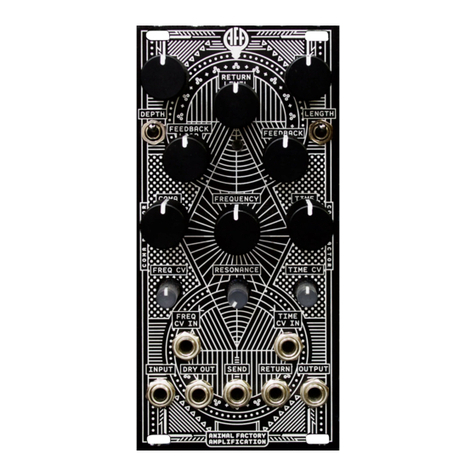
Animal Factory Amplification
Animal Factory Amplification Coma Reactor user manual
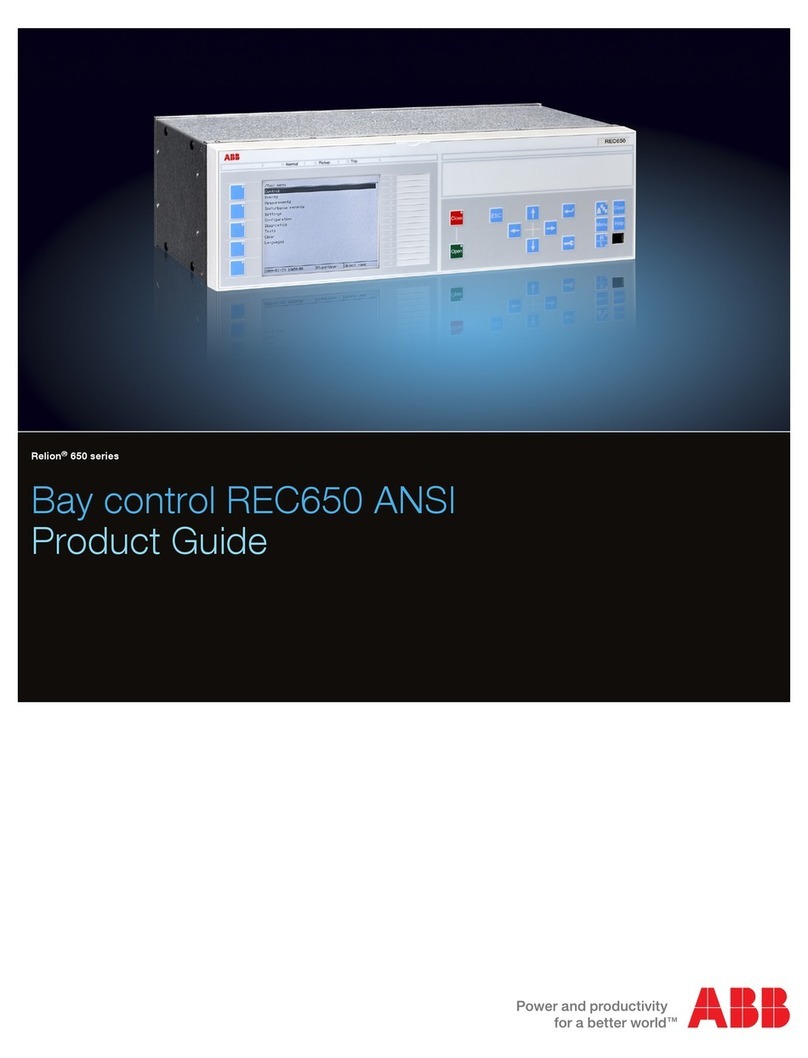
ABB
ABB REC650 ANSI Product guide

Rockwell Automation
Rockwell Automation 2711P-RPA installation instructions
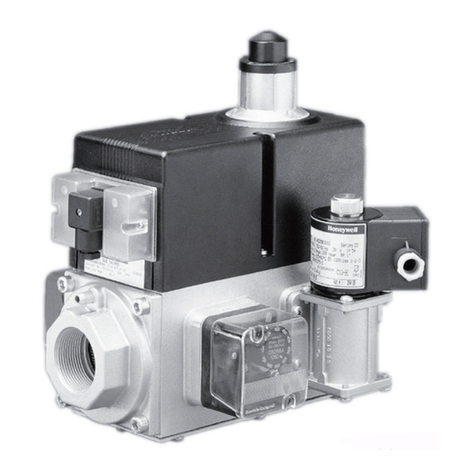
Honeywell
Honeywell VQ400 Series manual
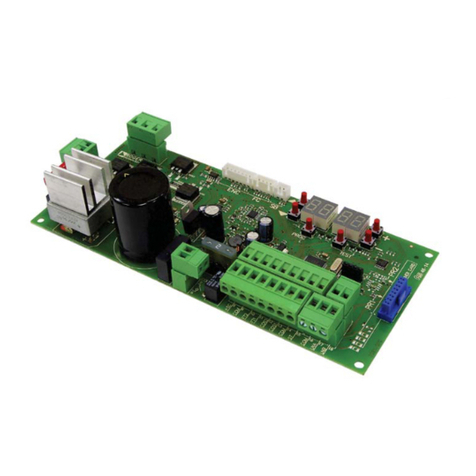
Roger Technology
Roger Technology B70/1DC Instruction and warnings for the installer
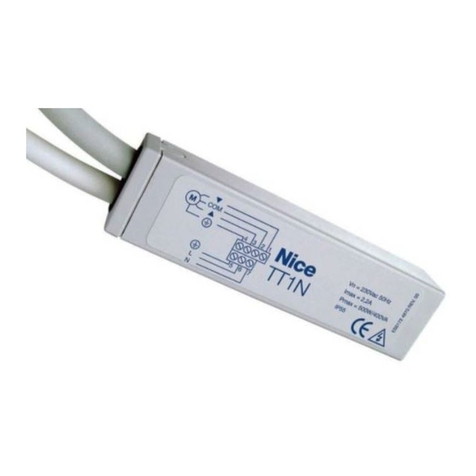
Nice
Nice mindy TT1N Instructions and warnings for the fitter
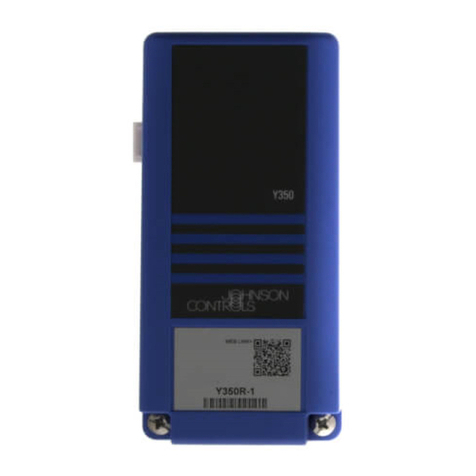
Johnson Controls
Johnson Controls System 350 Y350R Technical bulletin
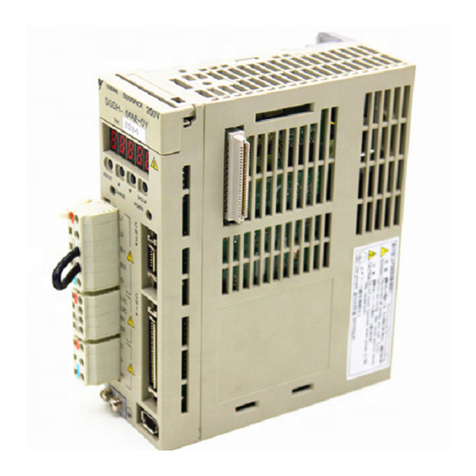
YASKAWA
YASKAWA MECHATROLINK Sigma 2 Series user manual
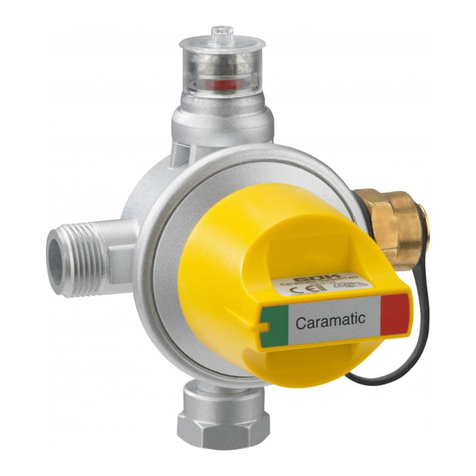
GOK
GOK Caramatic Switch Two Assembly and operating manual

GEM
GEM 695 operating instructions
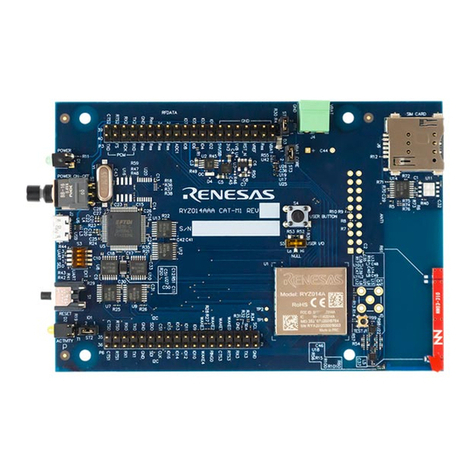
Renesas
Renesas RYZ014 manual
